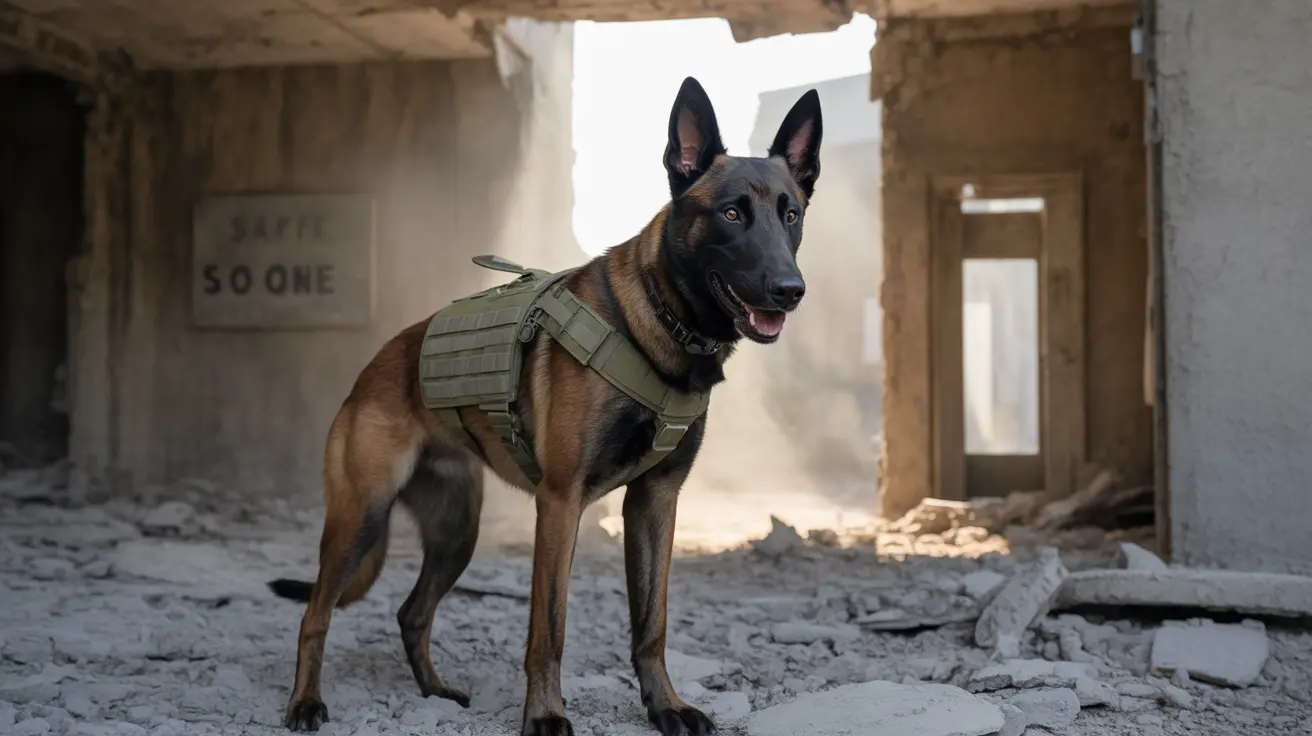Throughout history, military working dogs have played pivotal roles in warfare, demonstrating extraordinary courage, intelligence, and unwavering loyalty to their handlers. These four-legged heroes have saved countless lives and contributed significantly to military operations worldwide, from World War I to modern-day conflicts.
From detecting explosives to conducting covert operations, these remarkable canines have earned their place in military history through acts of incredible bravery and service. Let's explore some of the most celebrated war dogs and their remarkable contributions to military operations.
Legendary Military Dogs of World War I and II
World War I and II saw some of the most celebrated war dogs in history. Sergeant Stubby, a Boston Terrier mix, became America's most decorated war dog of WWI. He saved his regiment from surprise mustard gas attacks and caught a German spy by the seat of his pants, earning him a promotion to Sergeant.
During WWII, Chips, a German Shepherd-Collie-Husky mix, achieved fame by attacking an enemy machine gun nest in Italy, forcing the entire crew to surrender. His actions earned him the Distinguished Service Cross and Silver Star, though they were later revoked due to military policies regarding animal awards.
Modern Military Working Dogs
In recent conflicts, military dogs have continued to demonstrate their invaluable worth. Cairo, a Belgian Malinois, participated in Operation Neptune Spear, the mission that led to Osama bin Laden's capture. Lucca, another remarkable canine, conducted over 400 missions in Iraq and Afghanistan, detecting numerous IEDs and ensuring no human casualties under her watch.
Conan, also a Belgian Malinois, gained public recognition for his role in the 2019 raid that resulted in the death of ISIS leader Abu Bakr al-Baghdadi. These modern war dogs showcase the evolution of military canine capabilities in contemporary warfare.
Essential Roles and Responsibilities
Military working dogs serve in various crucial capacities:
- Explosive Detection and IED Location
- Patrol and Sentry Duty
- Search and Rescue Operations
- Special Operations Support
- Enemy Personnel Detection
- Psychological Warfare
Training and Selection Process
Military dogs undergo rigorous training programs that can last several months to years. The selection process focuses on specific traits including intelligence, physical capability, and temperament. German Shepherds and Belgian Malinois are particularly favored for their combination of strength, agility, and trainability.
These dogs must master various skills, from basic obedience to complex tactical maneuvers. Many learn to parachute from aircraft, rappel down buildings, and operate in extreme conditions alongside their handlers.
Legacy and Recognition
The contributions of military working dogs have led to various forms of recognition, including the establishment of the National War Dog Cemetery in Guam and the creation of numerous memorials worldwide. Many of these brave canines have received medals of valor and other military honors for their service.
Today, military working dogs continue to serve alongside human soldiers, maintaining their status as indispensable members of modern military forces.
Frequently Asked Questions
Who are some of the most famous war dogs in history and what heroic acts did they perform?
Sergeant Stubby (WWI), Chips (WWII), and Cairo (Operation Neptune Spear) are among the most famous war dogs. Their heroic acts included detecting gas attacks, capturing enemy soldiers, and participating in high-profile special operations missions.
How have military dogs been trained and used in different wars, from World War I to modern conflicts?
Military dogs' training has evolved from basic sentry and messenger duties in WWI to sophisticated roles including explosive detection, special operations, and counter-terrorism in modern conflicts. Training methods have become more sophisticated, incorporating advanced technology and specialized tactical training.
What breeds are commonly chosen as military working dogs and why are they preferred?
German Shepherds and Belgian Malinois are the most common military dog breeds due to their intelligence, strength, agility, and trainability. Labrador Retrievers are also frequently used for their excellent scenting abilities and calm temperament.
What roles do war dogs play on the battlefield, such as detection, scouting, and rescue missions?
Military dogs serve as scouts, sentries, explosive detectors, search and rescue operators, and special operations team members. They excel in detecting threats, locating casualties, and providing tactical support in various combat situations.
How are military dogs honored or recognized for their service and what happens to them after retirement?
Military working dogs receive various honors including medals, memorials, and ceremonial recognition. After retirement, many are adopted by their handlers or other military families through specialized programs designed to ensure their well-being in civilian life.






